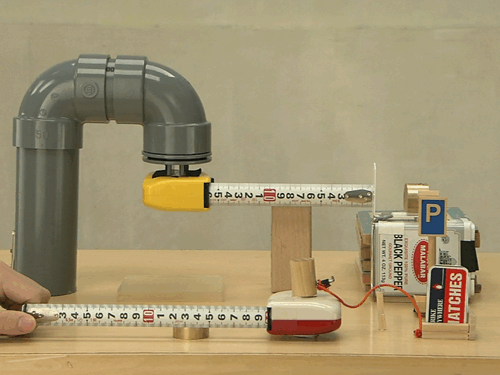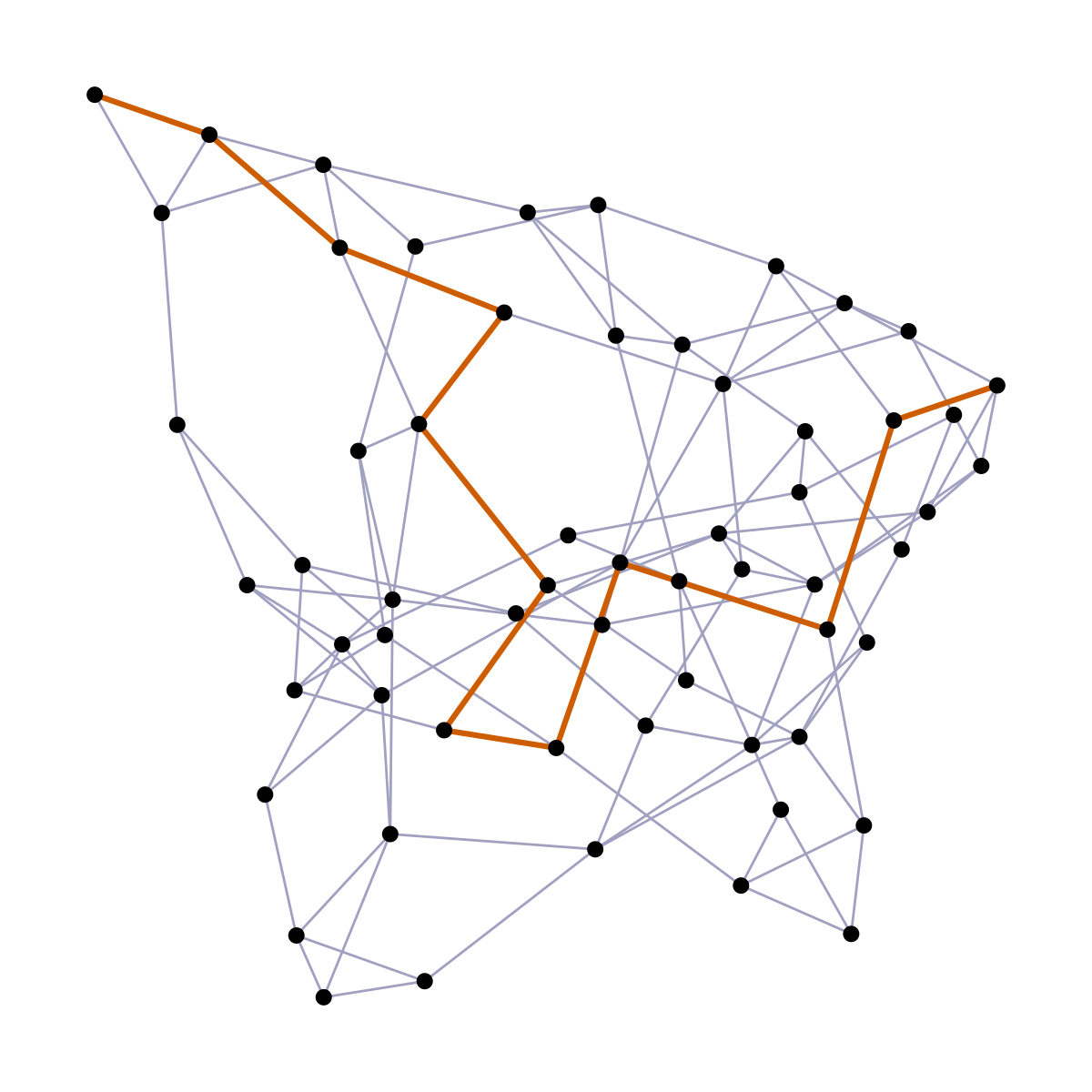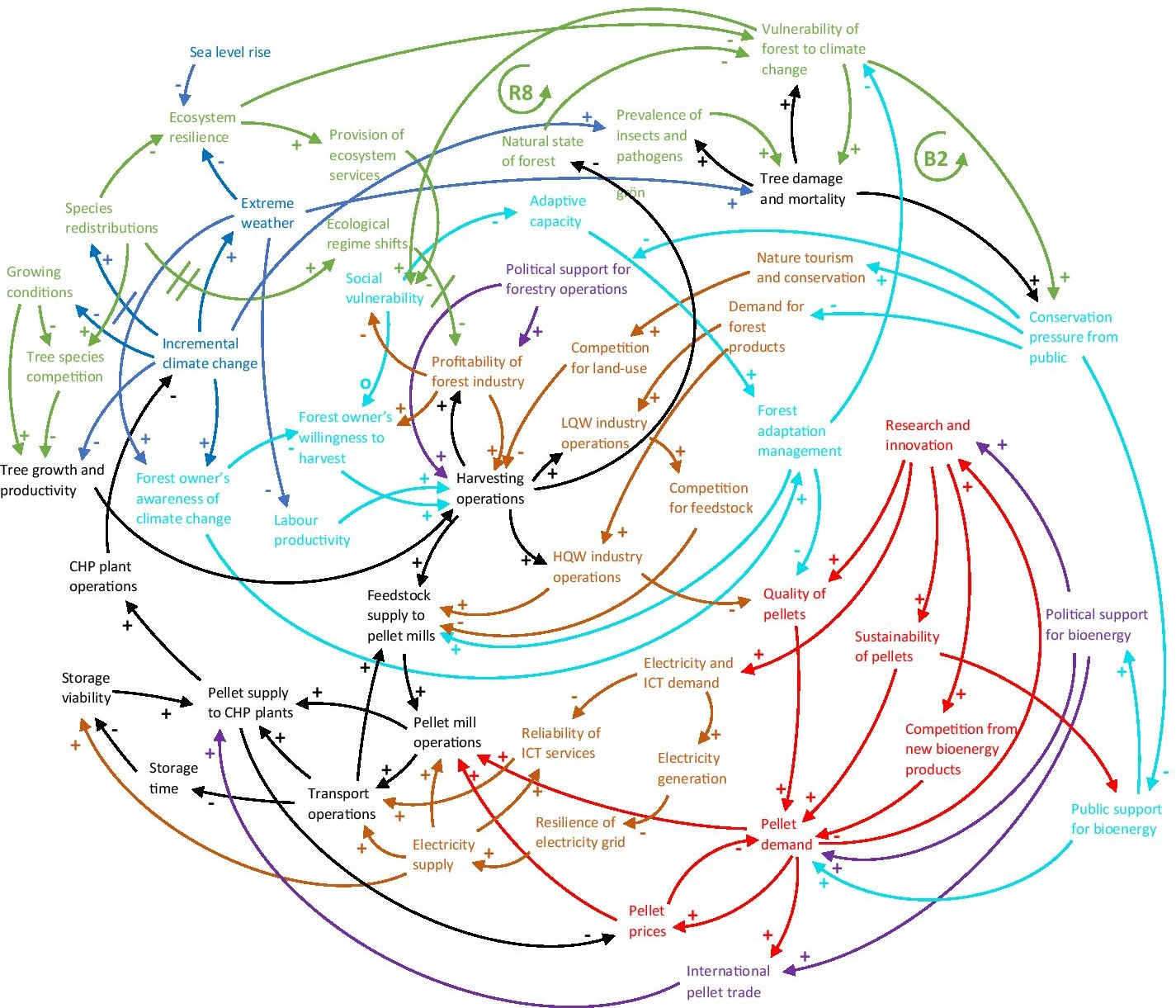About this essay. If you’re puzzled by my mentions of “differences”, contraptions and this weird thing I call “Ripple Universe”, you might want to skim through my other essay, Differences, Contraptions, and A Ripple Universe.
Daily life is like paying to go to an amusement park, only to walk straight past all the rides and get out.
We regularly miss the best parts. We see without seeing, wander without wondering, and turn the time we spend in this inconceivably deep world into a jagged but unidimensional route from B to D.
Yet it would be so easy to do otherwise! Just lift the lid, and every nanometer of reality has surprises and puzzles in store for you. There is no excuse for getting bored in such a place.
How does one lift the lid? Notice the connections.
For every evident connection—“the weather is hot, so I sweat”, or “she’s my friend”—there are a billion hidden connections that you’re oblivious to. Just look anywhere, dig a little, and you’ll find a surprising connection.
For example, the existence of exoplanets was unknown to most people until someone invented clever ways to detect them, and now we’re discovering hundreds of them every year. We now know that planets are the most common thing ever, and with so many planets, our hopes of finding a few inhabited ones is that much stronger.
Wonderful tech! But, thinking about it… it’s not like the exoplanets appeared out of nowhere a few years ago. Those same light patterns that are allowing our telescopes to discover alien planets today have been illuminating us—photons absorbed by our epidermis and retinas—all along, and on the skin and retinas of every human and non-human that ever existed on Earth.
We just didn’t notice until 1992.
What other interesting things are with us, physically, right now, that we’re just oblivious to?
Here’s another: at any given time you’ll have hundreds of people using your nearest cell tower for mobile communication. Cell towers transmit and receive phone call and internet data to and from everyone’s devices without knowing where each person is: they broadcast the data over the whole area, hoping the intended receiver is somewhere close enough to catch it—and so do our devices when they reply.
This means that, right now, the electromagnetic waves containing everyone’s information are passing through your room, through your body, through your brain.
Every news article your neighbor reads on her phone, every TikTok video nearby high-schoolers watch, every private conversation between clandestine lovers, every kind of pornographic image the guy down the street downloads, they all reach and touch you in the form of photons, at any time of day and night. Of course, your own data is washing over everyone else in the area too. Human eyes and ears can’t detect those photons, but they still pass through you, sometimes smashing into the molecules in your body and in your belongings. Information is always made of physical stuff.
More examples:
- Six degrees of separation is the idea (imagined by a poet in 1929 and at least partially supported by research) that every two random people on Earth are connected by about six or fewer “jumps” in social relationships. So Xi Jinping could be the friend of an acquaintance of a friend of a relative of a colleague of a relative of yours (or a similar combination). This weirdly flattering tool by the American Mathematical Society claims that I have exactly six degrees of separation from Albert Einstein (and Paul Erdős) if you count “co-authoring a scientific paper” as a connection. Things on Earth are cozier than you’d think.
- As you read this, you’re probably inhaling some of the air atoms that Julius Caesar exhaled in his last breath (and those exhaled by a potato farmer in pre-Columbian Peru, and her dog, and basically every animal who expired sufficiently long ago or sufficiently near you). If so, that would be a first-degree connection with a lot of people.
I don’t need to go into the more well-known examples of hidden connections, like the butterfly-in-Brazil-causing-tornadoes-in-Texas story or the good-thing-that-grandma-missed-her-bus-that-day-in-1953-because-that-led-her-to-meet-grandpa-and-bring-me-into-existence kind of musings. We’re all familiar with those from pop culture, but we rarely stop to think about them in our daily lives.
The world is brimming with this kind of subtle connections, and we learn to forget—even avoid thinking—about them.
Maybe we shut them out for the sake of our own sanity. But if the fact that these connections exist is telling us anything about the Universe, maybe we should try to grasp their nature.
1: Anthropomorphic Dog-Like TVs and Rolling Marbles
Since 2002 the Japanese public broadcaster NHK has been airing—six days a week—a show for children called Pythagoras Switch. Like most kids shows (especially Japanese ones) it’s a carousel of quirky strangeness. Here is Wikipedia’s description of one of its segments:
A puppet show in which Grandpa Encyclopedia (百科おじさん, Hyakka Oji-san) explains the structure of the world to young penguins Pita and Gora. A recurring situation is that, while discussing each topic, Encyclopedia would often say “The details are on my Nth page”, to what the Penguins, after looking at said page, respond “We’re children, so we can’t read…” After that, the three call upon Televi-John (テレビのジョン, Terebi no Jon) an anthropomorphic dog-like TV, who shows them a video about the topic. A mouse called Suu is also featured.
The show features lots of other segments, like Algorithm Exercise—a group of people all dancing out of phase with each other but still somehow pulling off neat choreographies—and a potato shaped like a die called Botejin. Ah, the pleasures of research!
One of the central and most famous segments of the show is Pythagoras Device. In English it could be called a kind of “Rube Goldberg machine”, or “domino toppling on steroids”. To me, it’s the definition of “neat contraption,” and I have a sympathy for contraptions.
The section starts with someone’s finger setting a marble in motion on a track of some kind.
The marble rolls down the edge of hardcover books, through plastic plumbing pipes and on tiny carts suspended from inclined strings. Sometimes the object seems to fall off a track, only to bump on a springy surface with a perfect angle, so that it manages to fall right into a new track and continue its advance.
At some point the marble stops against an obstacle, but by doing so—using its weight or the momentum of the impact—sets something else in motion: it topples a paper cup containing a bigger marble, which begins its own odd journey; or it tilts a cardboard plane with its weight, making a pencil roll to the edge and setting off another object’s trajectory; or it nudges a tin can off the edge of a table, making it fall down and pull on a string that lifts another cup with another marble, continuing the motion forward.
At the very end, the chain reaction stops by lifting a flag or completing a picture with the show’s name—Pythagoras Switch—written on it. It’s always different, and always a feast for eyes and neurons.

The thing keeps on going on, against all intuition, until it reaches the goal. Pieces of stationery conspiring to achieve a mission without any (direct) intelligent help. An algorithmic dance of pencils and rubber gums. A domino effect of stationery motion.
So “it” keeps on going on, but what exactly is the thing going on? It’s not a single marble or any other single object, because they all eventually come to a stop before the segment is finished. And it’s not necessarily energy flowing in a given direction, because some steps in the device involve being pulled back or removing obstacles.
What’s the “currency” that’s being exchanged at each cause-and-effect step?
It has often been said that energy is the currency of physics, just as economic values can be expressed in dollars or pounds. There are, however, certain fields of physics and technology where this currency is not readily acceptable.
[…]
examples can easily be given where the flow of information is opposite to the flow of energy, or where information is transmitted without a flow of energy or matter. The first is the case in a telegraph cable, where a direct current is flowing in one direction, but information, a message, can be sent in either direction by interrupting the current at one point and recording the interruption at another. For the second case, think of the photoelectric door openers as they are installed in many supermarkets: the shadow, the cutting off of light energy, informs the photocell that somebody is entering, and the door opens. So information, in general, cannot be expressed in terms of energy.
In Ripple Universe parlance, the thing that keeps on going forward is information—or, as I find it clearer to call it, differences.
The momentum of the marble is a difference, which leads to a new difference in the form of a cardboard plane being tilted differently, which leads to a new difference in the form of a pencil’s center of gravity being shifted beyond its supporting surface, which leads to another difference… and so on.
A Pythagoras Device is just a painstakingly curated example of the chains of cause and effect that constantly propagate and transform differences everywhere around us. In other words, I think that these devices are fascinating because they’re like miniature universes.
But the interesting question is the other way around: is the Universe an enormous Pythagoras Device? In the sense of differences rippling into more differences, I really think it is—a naturally-occurring, non-designed one. Each step is a connection, exactly the kind of innumerable connections surrounding us all the time.
Except the Universe is way more complex than these devices in at least two ways.
2: Things Are Complicated Complex
First, unlike the Japanese kid’s segment, interactions in nature form webs, not just chains.
Reality is a space where everything can interact with everything else. Albert Einstein said it peremptorily in 1910:
All natural science is based upon the hypothesis of the complete causal connection of all events.
In nature the chains of propagating differences intersect with each other all the time like an infinity of Pythagoras Devices, converging and diverging and crisscrossing with each other. That’s messier than the neat progressions on the kids show, even though it follows the exact same physical laws.

Second, reality in general is subtler than a hand-crafted contraption because, in truth, every step in the propagation of differences is a reciprocal affair. That’s Newton’s Third Law of Motion:
To every action there is always opposed an equal reaction; or, the mutual actions of two bodies upon each other are always equal, and directed to contrary parts.
It doesn’t matter which direction energy is transferred: both sides are experiencing change. Sometimes, for the sake of simplicity, one might say (as I did above) that “differences propagate forward” or “A leads to B”, but that’s only looking at half the picture.
Sure, the marble topples the cup, triggering a new series of amusing steps. But, at the same time, the cup stops the marble’s movement. The marble would have continued its motion differently if the cup hadn’t been there.
That’s to say, there is never a directional arrow pointing from an “object causing the change” to an “object being affected”: only objects affecting each other. Bidirectional arrows.
A punch hurts both for the receiving cheek and the hurtling fist. A river affects the rotation of the Earth a tiny bit by flowing downstream. Your spaghetti water doesn’t just “boil on its own accord”: hot-air molecules from the gas burner heat the pot, and the pot cools—slows—those hot molecules down. Once you begin seeing the world as made of two-way interactions, it’s hard to unsee it.
3: Always Between
We can condense all of this as such:
Whatever happens only ever happens between things, never to them.
We live in a Universe made entirely of differences, and everything that happens in this Ripple Universe is differences interacting with each other. This is the nature of the connections, hidden or not, that we see or overlook every day.
To put it another way, the Universe is one single, vast network touching everything that exists.
It’s the Big Pond on the surface of which we ripple.
Everything you have ever seen and will ever see is a “node”—a crossing point—in the universal network. The planets and stars are network nodes connected with each other through gravitational forces. They are connected with us, in turn, through the propagation of electromagnetic waves.
The geological layers in the Earth’s crust are network nodes connected with each other through interactions like gravity, friction, and exchange of minerals and magma.
The objects and animals and people on Earth are each a node interacting with all the others in a multitude of ways. And the tissues inside an animal’s body, and the cells inside the tissues are nodes too, and all the time they are interacting.

With every interaction, some differences ripple out through the nodes of this network in all directions, sometimes very unexpected ones. We tend to think in terms of chains of events, where “one thing leads to another,” improbable marriages are born, world wars are started, and serendipity ensues. We may see things as if they were very creative Pythagoras devices. In truth, all of this is embedded in a network. It’s harder, but possible, to see all the other changes that radiate out through the universal network at each of its steps, like shockwaves from epicenters.
4: The Infinitely Deep
We are perishing for lack of wonder, not for lack of wonders.
A single difference is an extremely boring thing. Two differences, or five, or a thousand, taken on their own, are just as basic and uninteresting. But the summation of differences, their intersection and interference, the explosion of possibilities arising from their constant interweaving, these are the definition of wonder itself.
As the puny, mortal creatures that we are, we fail to fully grasp—not to mention convey—this infinitely elaborate picture. Most of the time we fail so bad that we’re left helpless, gaping into what seems like a bottomless, monstrous fractal pit of chaos, frustrated at how none of this makes any sense at all.
Yet some things make sense.
Looking back, more things make sense to us today than they have ever made before. I think this is largely thanks to people who looked for the hidden connections.
One might hold that the beauty of physics resides in its ability to talk about both the infinitely large—galaxies, dark matter, big bangs—and the infinitely small—quarks, Higgs bosons, Plank scales.
I agree with that. But we’re doing ourselves a disservice if we shut out our curiosity for the small connections in life, if we don’t use our senses, and physics, and every other science, to also seek out the infinitely deep. ■
📬 Subscribe to the Plankton Valhalla newsletter
Further Reading
- Top image: networked world, as imagined by a network.
- “Six degrees of separations” theory isn’t really an accurate theory, as reality is (as usual) more complex than that. But it does hold in principle, well enough for the point I make in this essay.
- More here about breathing Caesar’s death-molecules.
